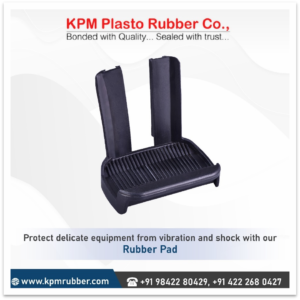Introduction
Rubber pads play an essential role in various applications providing enhanced protection, comfort, and functionality. Their versatility, durability, and adaptability make them a preferred material across industries, ranging from construction and manufacturing to sports and fitness.

Unveiling the Benefits of Rubber Pads
Rubber pads offer a multitude of advantages that make them a favored material for diverse applications:
Enhanced Protection: Rubber pads are designed to protect surfaces and objects from damage, shock, and wear.
Shock Absorption: The elasticity of rubber effectively absorbs shock, vibration, and impact, minimizing damage and providing a smooth transition.
Anti-Slip Properties: Rubber pads feature excellent anti-slip properties, reducing the risk of accidents and ensuring stability.
Comfort and Grip: The soft and pliable nature of rubber pads provides comfort and a secure grip, reducing fatigue and enhancing usability.
Noise Reduction: Rubber pads act as sound dampeners, reducing noise levels and creating a quieter environment.
Weather Resistance: Rubber pads are typically resistant to harsh weather conditions, including rain, snow, and UV radiation, making them suitable for outdoor use.
Durability: Rubber pads are known for their longevity and resilience, withstanding regular wear and tear without deteriorating.
Versatility: Rubber pads can be molded into various shapes, sizes, and thicknesses to suit specific applications and user preferences.
Applications of Rubber Pads
Rubber pads are widely used across various industries, including:
Construction and Manufacturing: Rubber pads are commonly used in flooring, machinery, and equipment to protect surfaces, absorb vibrations, and reduce noise.
Sports and Fitness: Rubber pads are incorporated into weightlifting equipment, fitness mats, and sports accessories to provide cushioning, shock absorption, and grip.
Automotive: Rubber pads are used in car mats, engine mounts, and other automotive components to protect surfaces, reduce noise, and enhance vibration dampening.
Home and Office: Rubber pads are found in furniture, appliances, and other household items to protect surfaces, reduce noise, and provide anti-slip properties.
Medical Equipment: Rubber pads are used in crutches, canes, and other medical devices to provide comfort, shock absorption, and grip for users with limited mobility.
Consumer Products: Rubber pads are incorporated into various consumer goods, such as kitchen utensils, tool handles, and even toys, providing enhanced grip, comfort, and protection.
Selecting the Right Rubber Pads
When choosing rubber pads, consider the following factors:
Application: Determine the intended use of the pads, considering factors such as the surface or object being protected, the environment, and the desired properties.
Material: Choose the appropriate rubber compound for the application, considering factors such as durability, chemical resistance, and temperature tolerance.
Shape and Size: Select pads that fit the surface or object being protected comfortably and securely.
Thickness: Choose the appropriate thickness for the application, considering factors such as shock absorption and load-bearing requirements.
Texture: Select pads with the appropriate texture for the application, considering factors such as grip retention and tactile feedback.
Color: Choose pads that complement the aesthetics of the surface or object being protected.
Maintenance and Care of Rubber Pads
Proper maintenance and care can extend the lifespan of rubber pads:
Cleaning: Regularly clean rubber pads with mild soap and water to remove dirt, grime, and oils that can cause deterioration.
Avoid Harsh Chemicals: Avoid exposing rubber pads to harsh chemicals, such as solvents or strong detergents, as they can damage the material.
Storage: Store rubber pads in a cool, dry place away from direct sunlight to prevent premature aging or cracking.
Inspection: Regularly inspect rubber pads for signs of wear, damage, or cracking. Replace damaged pads promptly to ensure protection and performance.
Conclusion
Rubber pads play an indispensable role in enhancing protection, comfort, and functionality across various industries and applications. Their versatility, durability, and adaptability make them an essential component of surfaces, equipment, and everyday objects, ensuring safety, efficiency, and user satisfaction. By understanding the benefits, selecting the right pads, and practicing proper maintenance, users can optimize the performance and lifespan of rubber pads, enhancing their overall experience.

About The Author: Seoteam
More posts by seoteam